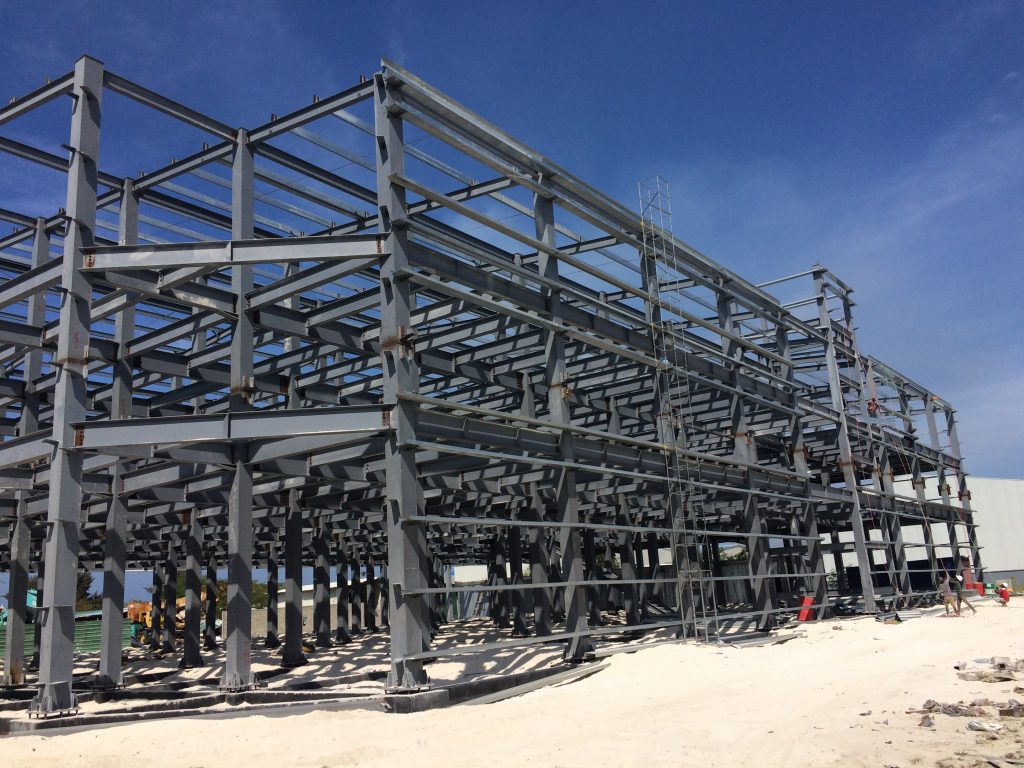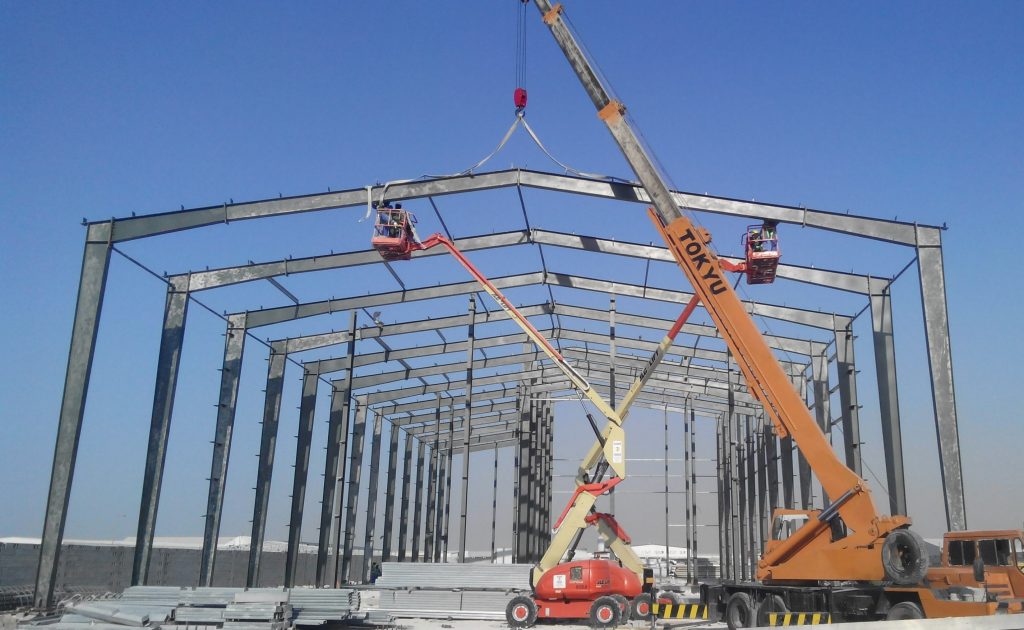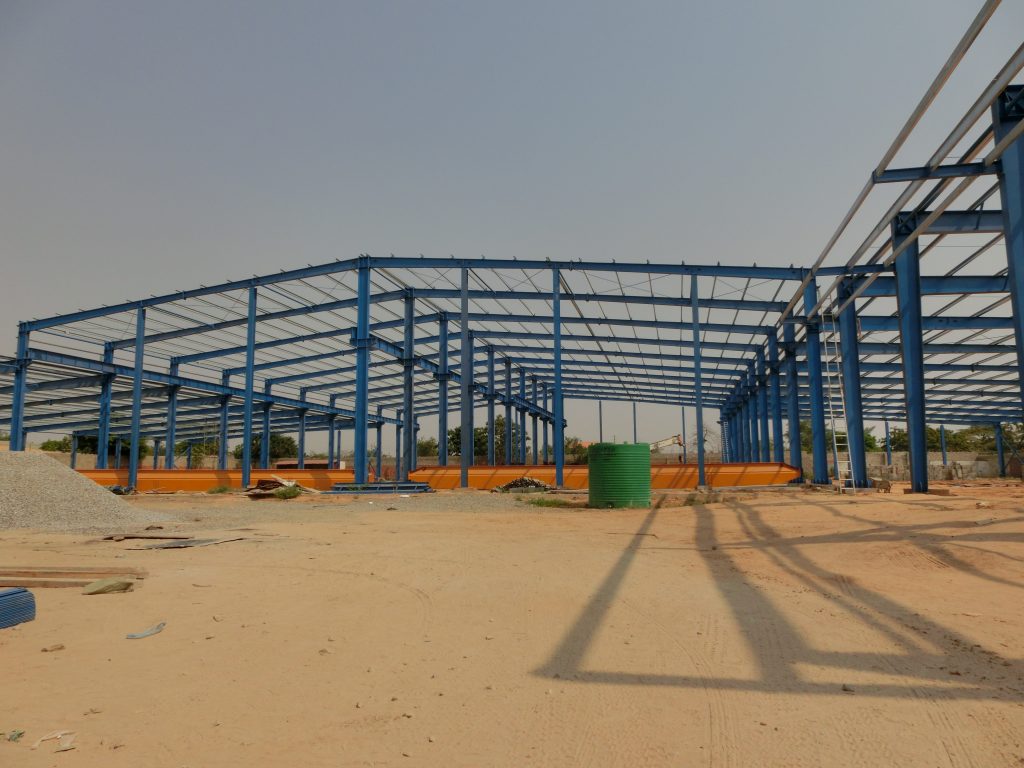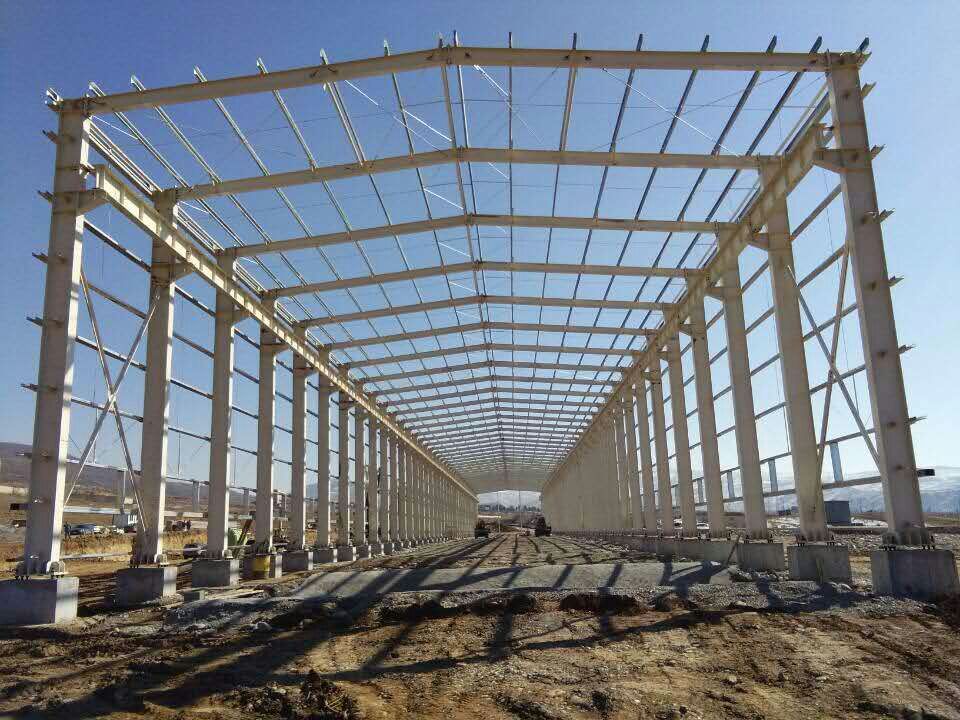Sathapana Poultry is one of the largest integrated poultry producers in Cambodia, supplying a significant portion of the country’s egg and broiler meat needs. Founded in 2000 with only a few laying hen farms outside Phnom Penh, Sathapana has expanded steadily over the past two decades through strategic partnerships and continuous reinvestment in advanced production facilities. As demand continued growing at a rapid clip, company leadership recognized the need to further scale up infrastructure to fully capture market opportunities and cement their industry leadership position. This ultimately led Sathapana to collaborate with Lida Group, a specialist in prefabricated light steel building solutions, to develop a new generation of large-scale, cost-efficient poultry housing across multiple provinces.
According to Sathapana’s Production Manager Chhom Dara, the previous generation of mostly timber-framed poultry barns they operated were approaching the end of their usable lifespan. “While the barns served us well initially, limitations in things like ventilation, disease control and efficiency became too great as we expanded flock sizes over the years. We needed a step change in our housing infrastructure to support the next phase of growth for our business.” Traditional reinforced concrete construction was an option explored, but estimates came with lengthy timelines and high price tags that strained projected returns on investment.
This is where Lida Group entered the picture based on their reputation for applying light steel framing technologies to industrial and agricultural buildings. “We were familiar with Lida Group’s work constructing facilities for other sectors and were impressed by their innovative, standardized solutions. Meeting with their engineering team, it was clear they truly understood our needs and objectives,” Chhom Dara noted. Leveraging over a decade of light steel application experience across diverse market sectors, Lida Group proposed a customized solution based on standardized prefabricated framing systems tailored for poultry housing on an industrial scale.

Key Drivers of the System Design:
– Maximize usable floor area within footprint for high stocking density without compromising bird welfare
– Incorporate optimum ventilation design parameters to regulate internal climate
– Facilitate automated feeding, watering and manure handling systems
– Allow division into isolation bays to control disease spread
– Ensure rapid disinfection/turnaround cycles between flocks
– Achieve 30+ year design life with low maintenance costs
Working closely with Sathapana’s specialists, Lida Group’s engineers drafted 3D models of barns incorporating these prerequisites at an economical size of 150m x 15m to house up to 30,000 birds per structure. Entire wall, roof and support frames were to be prefabricated offsite from light gauge steel components for rapid field assembly. Individual housing bays, feed lines, watering systems, manure scrapers and environmental controls were also optimized for integration into a cohesive plug-and-play barn system.
A full-scale prototype barn was constructed to verify design functionality ahead of mass production. Minor refinements were made based on operational feedback before production equipment was tooled up at Lida Group’s fabrication facility. Future-proofing was incorporated to allow retrofitting barn interiors for different poultry types or expanding flocks as needed through the facilities’ long service lives. “The level of prefabrication engineering achieved with the system astounded us. Entire barns go together like giant 3D jigsaws in a fraction of the time traditional building would require,” praised Chhom Dara.

Over the subsequent 18 months, 60 of the light steel poultry barns were rolled out across multiple farms under Sathapana’s management. Construction proceeded incredibly efficiently with barn frames and envelopes being assembled by small crews in just 2-3 weeks per structure thanks to the standardized prefabrication. Integrating specialized poultry equipment inside then took an additional 4-6 weeks before flocks were ready to be moved in. Total project cost was within 10% of initial estimates despite scope increases along the way, reflecting Lida Group’s ability to deliver complex engineered buildings on budget.
Once populated, benefits of the new housing systems were immediately apparent compared to old facilities. Strict environmental controls maintained ideal temperature, humidity and ventilation conditions, leading to improved bird health and welfare. Higher stocking densities were comfortably supported without detriment to bird performance or food conversion rates. Thanks to stringent biosecurity measures like sealed isolation bays and automated cleaning systems, outbreaks of infectious diseases were more contained when they occurred, minimizing productivity losses.
Labor requirements decreased as manual tasks were replaced by automation. Flock turnover intervals accelerated by over 1 week as barns and equipment could now be fully disinfected in just 2-3 days between cycles versus previously drawn out processes. Such improvements multiplied across Sathapana’s expanded production volume translated directly to increased output, margins and revenues to drive continued growth.

From a long-term sustainability perspective, light steel infrastructure also offered cost saving benefits. Minimal maintenance like repainting every 5-10 years versus heavy timber’s more frequent treatments meant lower whole-of-life operating expenses. Expected 50+ year design lives obviated wasteful replacement costs down the road as well. The durable pre-engineered construction likewise withstood Cambodia’s extreme wet/dry weather extremes without issues like leakage and material degradation faced by some conventional buildings after a decade or two of use.
When reflecting on the success of the project partnership so far, Sathapana CEO Ing Souen heaped praise on Lida Group: “Taking poultry housing to an industrial scale required innovative solutions, and the Lida team truly delivered beyond our expectations. Their light steel systems now form the backbone of our operations, enabling us to sustain strong growth and maintain market leadership. We look forward to further expanding this strategic partnership in the future.” According to Ing Souen, opportunities exist to modernize existing older facilities as well as pursue multi-species poultry diversification into egg layer grandparent farms, broiler breeder farms and more.
For a company like Lida Group specialized in prefabricated buildings, complex projects comprising many interconnected structures provide excellent opportunities to fully leverage their design, fabrication and assembly expertise. According to Lida Group’s Managing Director Antony Leong, the scale of Sathapana’s expanded poultry operations aligned perfectly with this capability. “From standardized structural and enclosure components up to complete plug-and-play housing systems optimized for production workflows, our engineering and manufacturing capabilities were tested but amply rewarded us. We pride ourselves on delivering turnkey solutions that maximize clients’ operational efficiency – this project has set a new high watermark.”

Looking ahead, both companies see immense potential for further collaboration as Sathapana leads Cambodia’s poultry industry into the future. Additional processing plant expansions, feed mill upgrades, cold storage and logistics infrastructure will be needed to vertically integrate the supply chain. Lida Group stands ready apply its prefabrication expertise across all these areas. “Food security and quality protein availability are so important for any developing nation. We are honored to support Sathapana’s vision and empower them to produce on an even larger scale through innovative infrastructure solutions,” Antony Leong added.
In summary, partnering with light steel specialists like Lida Group has enabled an industry leader like Sathapana Poultry to achieve exponential production capacity growth within optimized, future-proof infrastructure systems. From standardized housing components to turnkey plug-and-play barns, prefabricated solutions industrialized poultry building construction in Cambodia. This enabled Sathapana to rapidly scale operations and maintain efficiency even at increased volumes – continuing their strong trajectory of market leadership and positive social impact through affordable food supply. As infrastructure needs continue evolving across Cambodia’s agriculture sector, collaborative projects like this showcase the transformational role standardized prefabrication can play in sustainable development when harnessed by visionary organizations.

Related news
-
Disaster response conference highlights Lida Group’s role in rapid deployment of prefabricated emergency shelters, field hospitals and residential units with its patented easy-install sandwich panel construction.
2024-09-11 15:00:48
-
Technical paper evaluates Lida Group's optimized process for mass-producing prefab modules delivering comfortable accommodation to non-permanent work populations.
2024-08-30 16:14:50
-
Academics commend adaptability and resilience of shelters assembled quickly in disasters using Lida Group's panelized building techniques.
2024-08-19 17:10:40
contact us
- Tel: +86-532-88966982
- Whatsapp: +86-13793209022
- E-mail: sales@lidajituan.com


